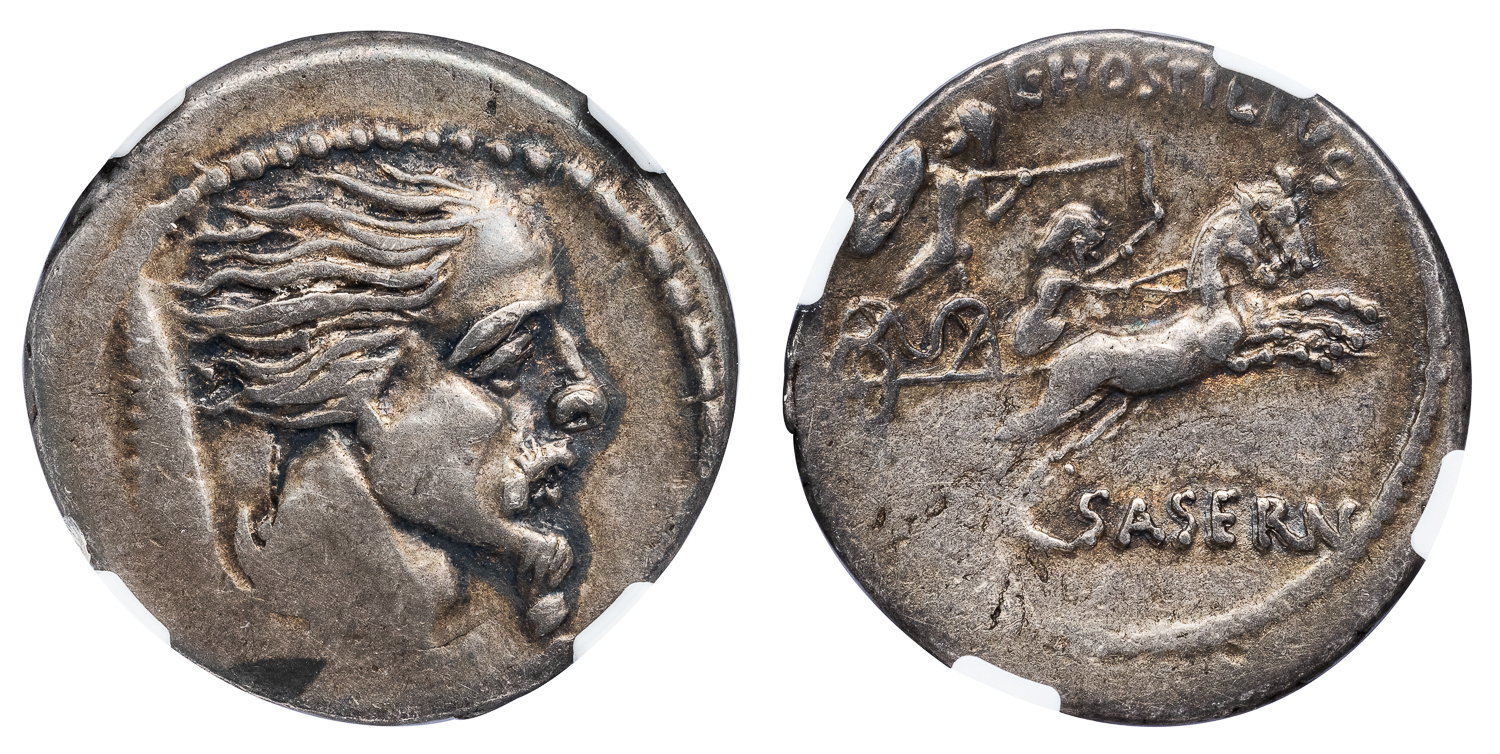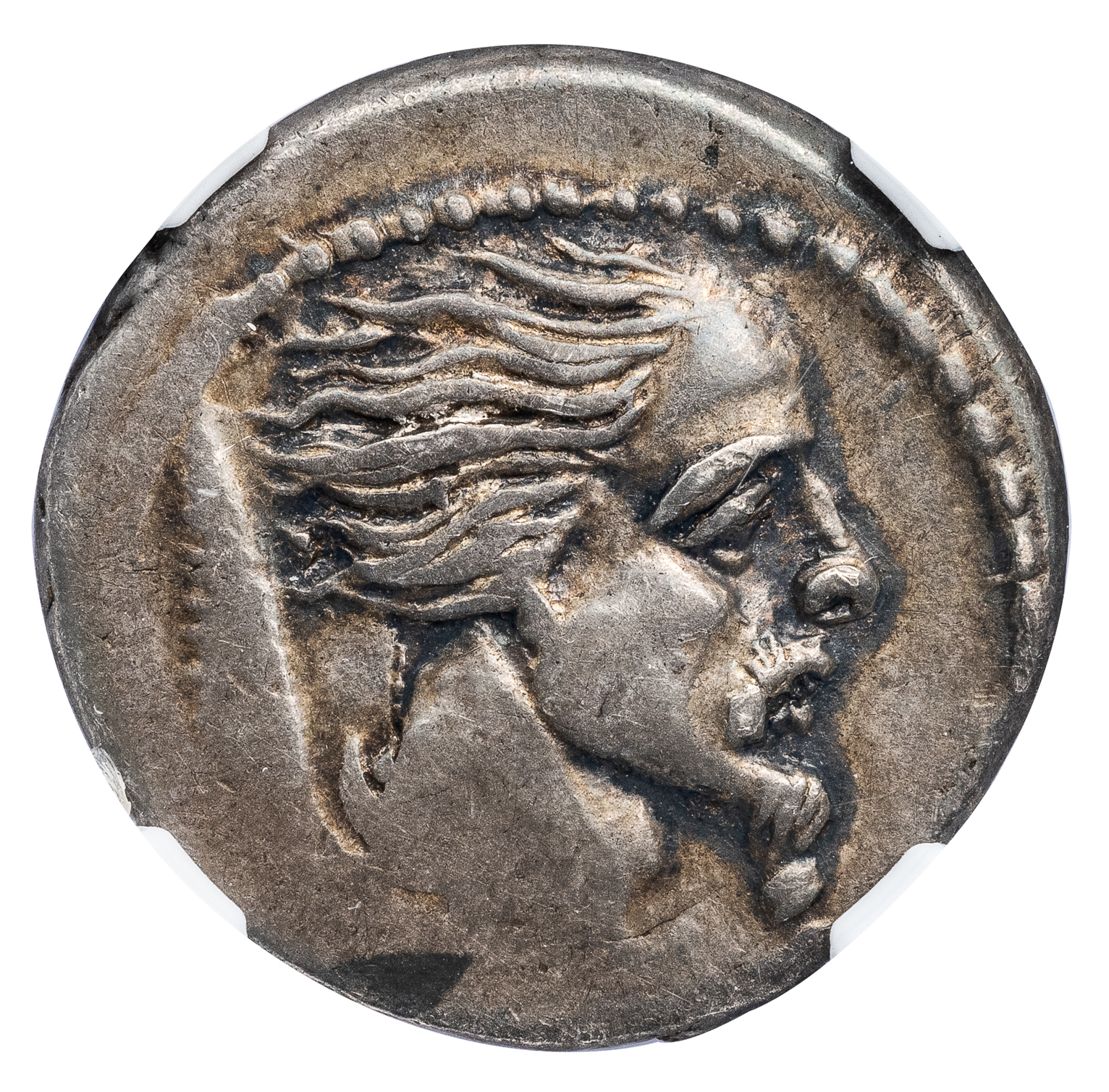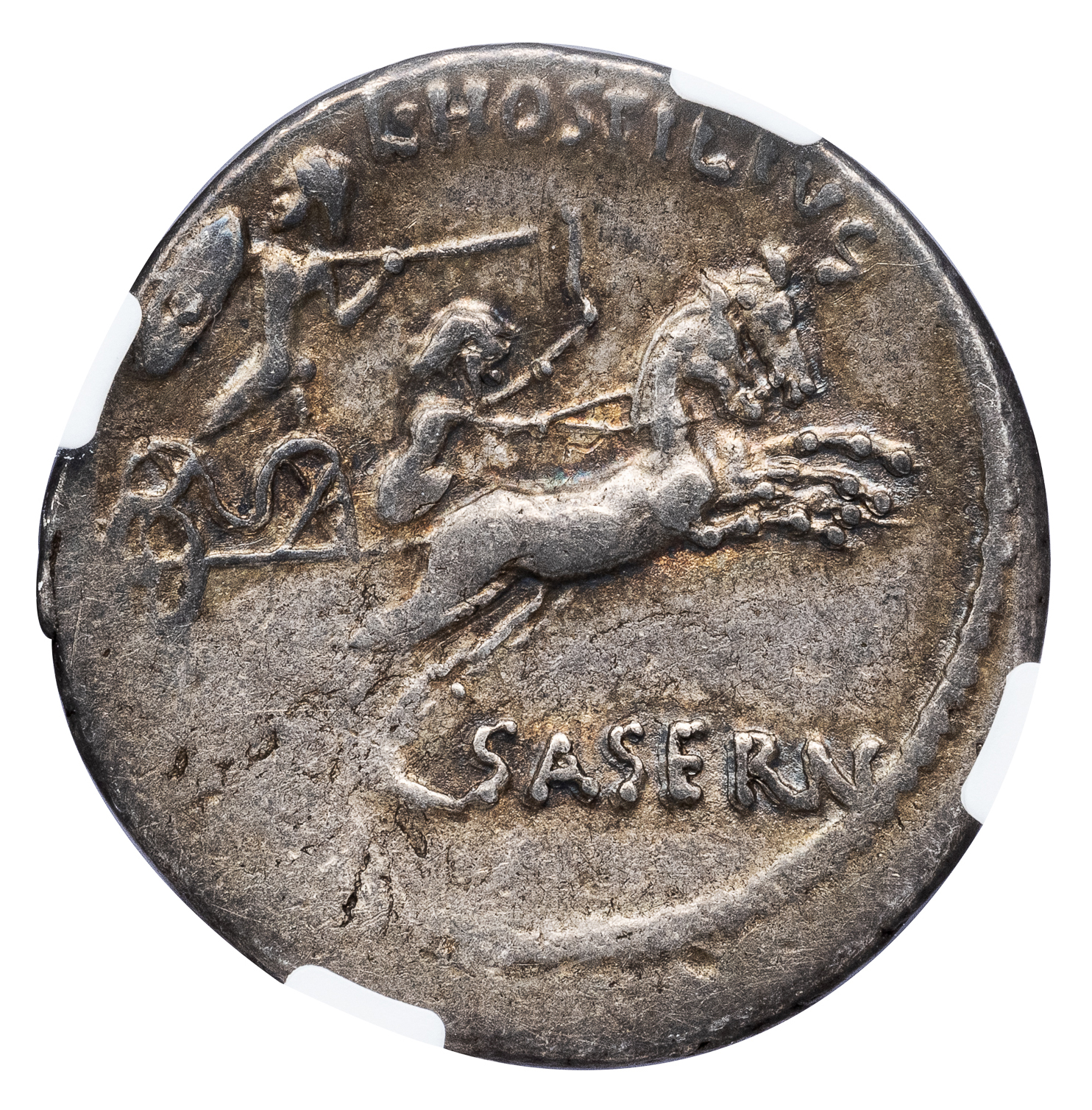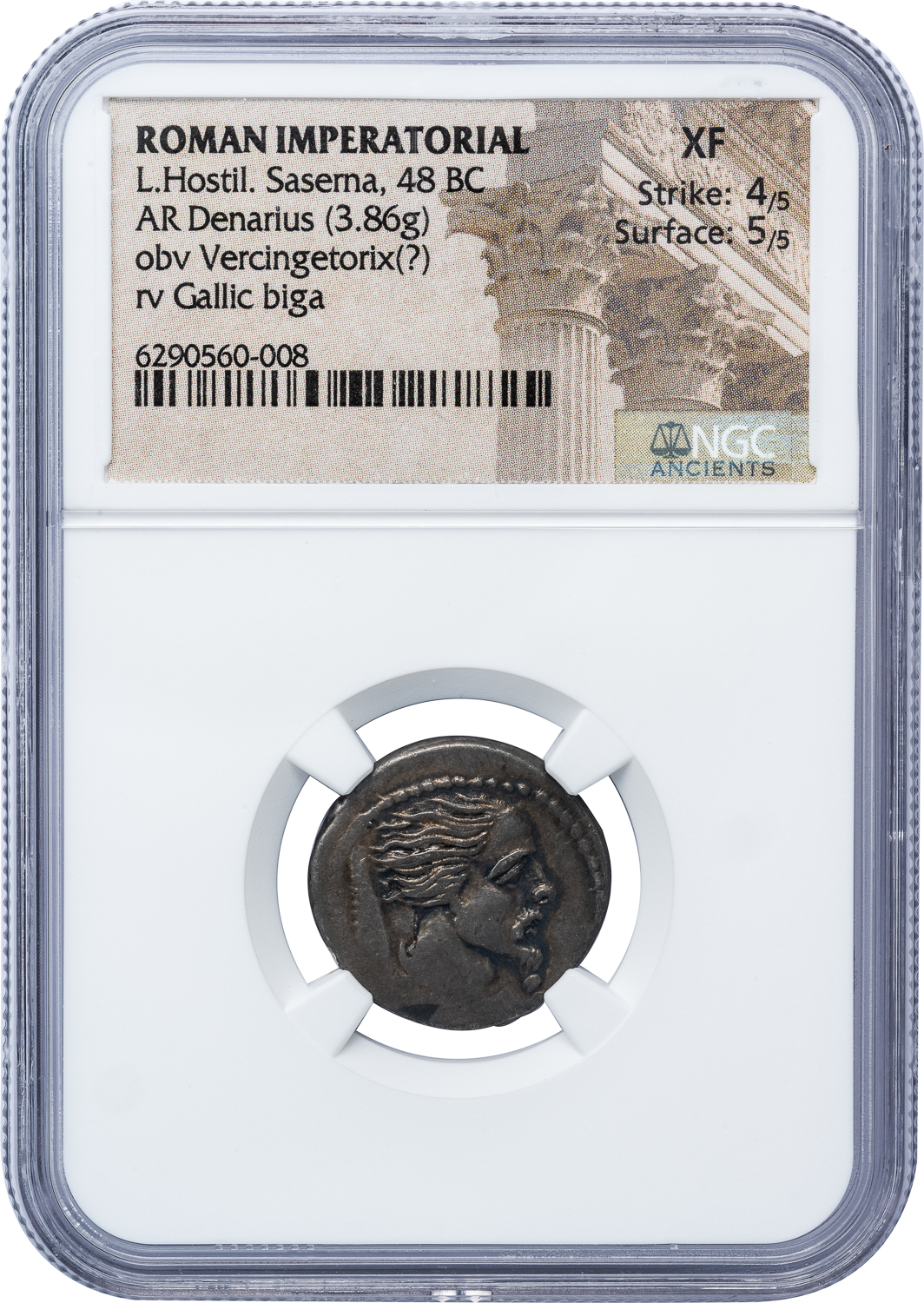L HOSTILIUS SASERNA SILVER DENARIUS – GALLIC PORTRAIT AND CHARIOT ISSUE OF 48 BC – XF NGC GRADED ROMAN IMPERATORIAL COIN (Inv. 19045)
$3,350.00
FPL VI, 69 (19045). ROMAN IMPERATORIAL. L. HOSTILIUS SASERNA, 48 BC.
Silver denarius, 3.86 g, 20 mm.
Obv. Head of Gaul (perhaps Vercingetorix) with flowing hair to right, shield at left. Rev. [L HOSTILIVS] SASERN, Gallic warrior holding spear standing left in galloping biga right, driver holding reins and whip.
Crawford 448/2a; Sydenham 952.
NGC graded XF, Strike 4/5, Surface 5/5.
This famous denarius type of L. Hostilius Saserna advertises the recent victories of Julius Caesar in the Gallic War (58-50 BC). The obverse depicts the head of a Gallic chieftain, his hair spiked with lime to increase his terrifying aspect on the battlefield. The chieftain is widely believed to be a portrait, or at least a representation of the great Gallic war leader Vercingetorix. In early 52 BC, shortly after becoming king of the Arverni, Vercingetorix forged alliances with other Gallic tribes in an attempt to create a united front to drive the Romans out of Gaul. He was ultimately defeated by Caesar at the hard-fought Battle of Alesia in September 52 BC. Realizing that his cause was lost and hoping to save the lives of his people, Vercingetorix nobly surrendered himself to Julius Caesar. He was subsequently taken to Rome and imprisoned in the Tullianum for almost six years before he was brought out to march in Caesar’s Gallic triumph in 46 BC. Once the triumphal celebration had come to an end, the hapless Vercingetorix was returned to his cell and strangled. The reverse of this denarius depicts the Celtic war chariot, a weapon faced by the Romans during the invasion of Britannia in 55 BC. Such chariots were not a regular part of continental Gallic armies and Julius Caesar describes them and their tactics for the first time in his commentary on the Gallic War (IV.33).




